In recent years, the culinary landscape has witnessed a remarkable shift with the integration of restaurant-grade air fryers. These high-capacity appliances have not only found their way into commercial kitchens but have also sparked a revolution in how food is prepared and served. This article delves into the fascinating journey of these powerful kitchen tools, exploring their features, the meticulous process behind their creation, the rigorous quality control measures, their impact on health and sustainability, shining a light on successful brands, and looking ahead to the exciting future of restaurant-grade air fryer technology.
Introduction to Restaurant-Grade Air Fryer Factories
Nestled within the heart of modern culinary innovation, restaurant-grade air fryer factories stand as testament to the evolution of cooking technology. These specialized facilities are not just manufacturing hubs; they are the crucible where innovation meets efficiency, creating appliances that transform the way chefs and restaurateurs approach cooking.
These factories are designed with precision, understanding that their output is not just a product but a tool that can elevate the dining experience. The air fryers produced here are not your average kitchen gadgets; they are robust, commercial-grade machines that are built to withstand the demands of a busy kitchen environment.
The journey begins with the selection of materials. High-quality stainless steel, durable plastics, and advanced electronic components are meticulously chosen for their resilience and ability to maintain performance under extreme conditions. These materials are not just about longevity; they are about ensuring that the air fryer can handle the rigors of a professional kitchen without compromising on flavor or quality.
In the heart of the factory, the assembly line is a symphony of motion. Workers, trained to the highest standards, move with purpose, assembling components that are designed to work in harmony. Each part is precision-machined, ensuring that the air fryer operates with the utmost precision. From the heat elements to the fan blades, every piece is crucial to the air fryer’s ability to circulate air at the optimal temperature for frying without the need for excessive oil.
Safety is paramount in these factories. The air fryers are rigorously tested to meet or exceed international safety standards, including electrical safety, fire resistance, and durability. The factories are equipped with state-of-the-art testing equipment that simulates real-world conditions, ensuring that the air fryers can handle everything from a minor glitch to an accidental drop.
The technology inside these air fryers is cutting-edge. Advanced heating elements provide consistent temperatures, while intelligent control systems monitor and adjust cooking times and temperatures automatically. This not only ensures that food is cooked to perfection but also saves time and energy, a crucial factor in a professional kitchen setting.
Once assembled, the air fryers are subjected to a series of quality checks. These checks are thorough, examining everything from the integrity of the seams to the accuracy of the digital displays. The goal is to ensure that every air fryer that leaves the factory is as reliable as the last.
Innovation doesn’t stop at the factory gates. Restaurant-grade air fryer factories are constantly researching and developing new features. From removable baskets that make cleaning a breeze to smart connectivity that allows chefs to monitor and control their appliances remotely, these factories are at the forefront of integrating technology into kitchen appliances.
The environmental impact of cooking equipment is also a concern for these factories. As awareness of sustainability grows, so does the focus on creating energy-efficient appliances. Restaurant-grade air fryers are designed to use less oil and energy than traditional fryers, contributing to a greener kitchen and a more sustainable future.
The end result is a product that is not just a tool but an asset. Restaurant-grade air fryers are designed to be the backbone of a professional kitchen, capable of handling a wide variety of cooking tasks with ease. From crispy French fries to tender chicken, these air fryers can do it all, with minimal oil and maximum flavor.
In the ever-evolving world of culinary technology, restaurant-grade air fryer factories are at the forefront, pushing the boundaries of what’s possible. They are not just producing appliances; they are shaping the future of professional cooking, making it healthier, more efficient, and more enjoyable for both chefs and diners alike.
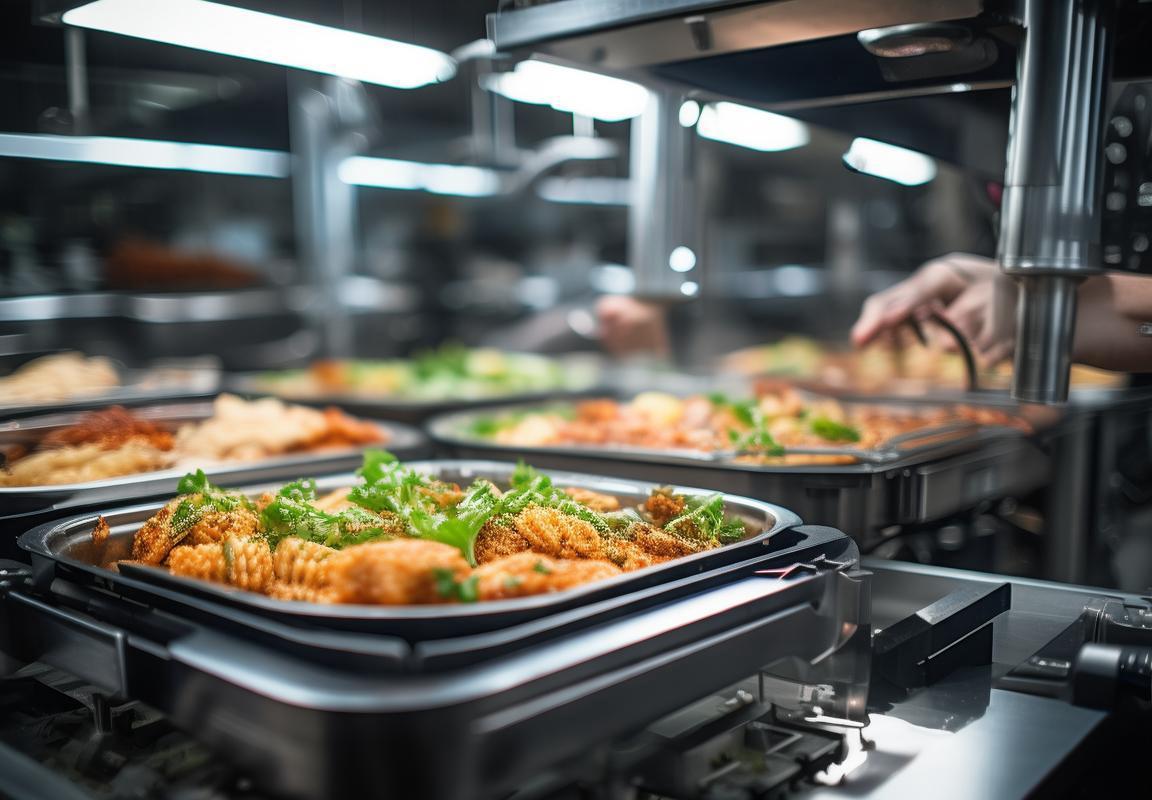
The Rise of Commercial Air Fryers in the Culinary Industry
The culinary landscape has been dramatically transformed by the rise of commercial air fryers. These innovative kitchen appliances have become a staple in professional kitchens, offering chefs and restaurant owners a healthier, more efficient way to fry without the excess oil. Let’s delve into the factors that have propelled the growth of these commercial air fryers in the culinary industry.
The shift towards healthier eating habits has been a significant driver in the popularity of commercial air fryers. Consumers are increasingly seeking out restaurants that offer low-fat, heart-healthy alternatives to traditional fried foods. As a result, chefs and restaurateurs have been on the hunt for cooking methods that can deliver the same crispy texture without the guilt. Commercial air fryers have stepped in to fill this demand, allowing for the creation of dishes that are both satisfying and nutritious.
The versatility of commercial air fryers is another key factor in their meteoric rise. These units are not just limited to frying; they can also bake, roast, and even dehydrate. This all-in-one functionality has streamlined kitchen operations, reducing the need for multiple appliances and simplifying the cooking process. Chefs can now experiment with a wider array of recipes, from crispy chicken wings to golden French fries, all in one machine.
The efficiency of commercial air fryers is a game-changer for busy kitchens. Traditional frying methods require a significant amount of oil and constant monitoring to prevent burning. With an air fryer, the process is much cleaner and requires less oil, often just a tablespoon or two. This not only cuts down on prep time but also minimizes the risk of kitchen fires and oil spills, which are common hazards in professional kitchens.
The cost-effectiveness of commercial air fryers cannot be overlooked. Despite their initial investment, these units can save restaurants money in the long run. By using less oil and reducing the risk of kitchen accidents, restaurants can lower their operational costs. Additionally, the longevity of commercial air fryers means that they can be a reliable tool for years to come, further justifying their purchase.
As sustainability becomes a priority for many businesses, commercial air fryers are a greener choice. The reduction in oil usage and the elimination of greasy waste contribute to a more eco-friendly kitchen environment. Chefs who are passionate about sustainability are turning to air fryers as a way to align their cooking practices with their environmental values.
The technology behind commercial air fryers has also evolved, offering precise temperature control and timer settings. This level of precision is crucial for maintaining consistency across large batches of food, which is essential in the fast-paced restaurant environment. Chefs can now produce high-quality fried dishes with the same taste and texture, batch after batch.
The impact of commercial air fryers is not just felt in traditional restaurants; they have also made their way into fast-food chains and food trucks. These mobile kitchens need to be as efficient and versatile as possible, and commercial air fryers fit the bill perfectly. The portability and ease of use make them a practical choice for establishments on the go.
The rise of social media and food blogging has also played a role in the popularity of commercial air fryers. Chefs and food enthusiasts alike are sharing their success stories and recipes online, showcasing the potential of these appliances. This exposure has sparked interest and curiosity, leading to more inquiries and sales.
Finally, the adaptability of commercial air fryers to various cooking styles has expanded their appeal. Whether it’s the American love for crispy fried chicken or the European penchant for rich pastries, air fryers can handle it all. This flexibility has made them a favorite among chefs who pride themselves on offering a diverse menu.
In conclusion, the rise of commercial air fryers in the culinary industry is a testament to the ever-evolving demands of consumers and the need for efficient, health-conscious cooking solutions. With their ability to offer low-fat fried foods, versatility, efficiency, cost-effectiveness, and eco-friendliness, these appliances have become an indispensable tool in modern kitchens.

Key Features of Restaurant-Grade Air Fryers
Commercial air fryers, especially those designed for restaurant use, have seen a surge in popularity due to their versatility and health benefits. Here’s a closer look at the key features that make these appliances stand out in the culinary industry:
-
Large Capacity: Restaurant-grade air fryers are built to handle substantial volumes of food, making them ideal for busy kitchens. These units often come with a capacity that can cater to multiple orders simultaneously, ensuring efficient service during peak dining hours.
-
Industrial Strength Construction: Unlike their residential counterparts, commercial air fryers are built to withstand the rigors of a busy kitchen environment. They feature durable materials like stainless steel, which not only ensures longevity but also contributes to a hygienic cooking surface that’s easy to clean.
-
Consistent Heat Distribution: To achieve the best frying results, these fryers are equipped with advanced heating elements that provide even heat distribution throughout the cooking chamber. This ensures that every piece of food is cooked to perfection without burning or undercooking.
-
Adjustable Temperature Settings: With precise temperature control, restaurant-grade air fryers allow chefs to achieve the desired level of crispiness and cooking time. These units often offer a wide range of temperature settings, allowing for a variety of recipes that might require different cooking temperatures.
-
Quick and Efficient Cooking: These fryers are designed to cook food faster than traditional deep fryers while using significantly less oil. This not only reduces cooking time but also slashes the fat content of the food, making it a healthier option for both diners and restaurant owners.
-
Timer and Auto-Off Functions: To prevent overcooking and ensure safety, many commercial air fryers come with a timer function that allows the operator to set a precise cooking time. Once the timer reaches zero, the fryer automatically shuts off, minimizing the risk of fire hazards.
-
Easy-to-Use Controls: Designed with the busy chef in mind, these fryers feature user-friendly controls that are easy to navigate. Large buttons and clear displays make it simple to adjust settings without having to stop what you’re doing.
-
Large Doors and Removable Baskets: The doors on restaurant-grade air fryers are often oversized and designed to swing open wide, allowing easy access to the cooking basket. Some models also feature removable baskets, which can be washed separately for added convenience and cleanliness.
-
Safety Features: Safety is paramount in commercial kitchens, and these fryers are equipped with various features to ensure operator and customer safety. This includes overheat protection, which shuts down the fryer if it exceeds a certain temperature, and cool-touch exteriors to prevent accidental burns.
-
Energy Efficiency: With energy costs being a significant concern for businesses, restaurant-grade air fryers are designed to be energy-efficient. They use less electricity than traditional deep fryers, leading to lower operational costs over time.
-
Versatility: While primarily designed for frying, many restaurant-grade air fryers can also be used for roasting, baking, and grilling. This versatility allows chefs to expand their menu options without the need for multiple appliances.
-
Maintenance and Cleaning: Commercial air fryers are designed with maintenance in mind. With easy-to-access components and removable parts, cleaning is a straightforward process that helps maintain the appliance’s performance and longevity.
-
Customization Options: Some manufacturers offer customization services, allowing restaurants to tailor the fryer to their specific needs. This could include branding, size adjustments, or additional features to enhance the unit’s functionality.
These key features highlight why restaurant-grade air fryers have become a staple in the culinary industry, offering a combination of efficiency, health benefits, and convenience that appeal to both chefs and customers alike.
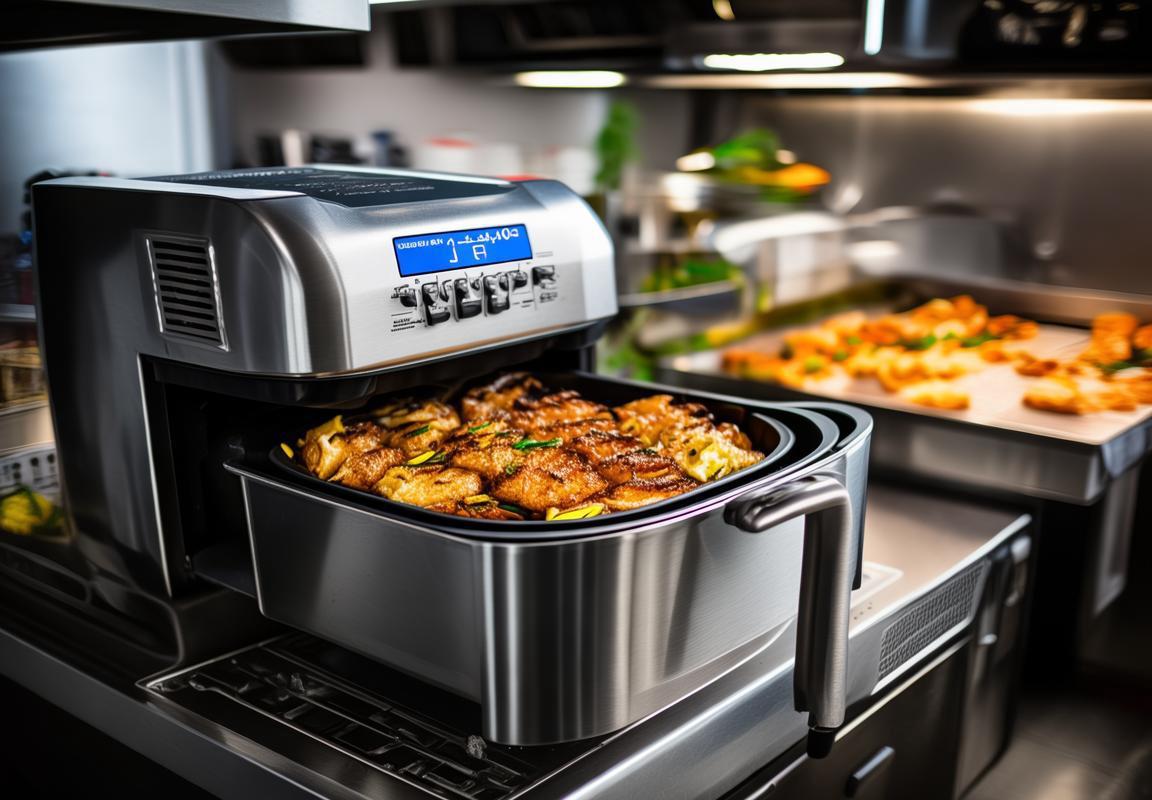
The Factory Process: From Components to Final Product
In the world of commercial kitchen appliances, the journey from raw components to a finished, restaurant-grade air fryer is a testament to precision, innovation, and quality control. This intricate process involves several stages, each crucial to the final product’s performance and durability.
The first step is the selection of high-quality materials. These materials must be able to withstand the intense heat and rigorous use of a commercial kitchen environment. Aluminum, stainless steel, and certain types of plastic are commonly used for their heat resistance, durability, and non-stick properties.
Once the materials are chosen, they are sent to the cutting department. Here, metal sheets are meticulously cut into precise shapes and sizes that will form the fryer’s body. The cutting process requires precision to ensure that the components fit together perfectly, which is essential for the air fryer’s overall structure and performance.
After cutting, the pieces are moved to the welding station. Welding is a critical phase, as it joins the components together to create the fryer’s frame. Skilled welders use advanced techniques to ensure that the seams are strong and leak-proof, which is vital for maintaining consistent air flow and preventing any potential hazards.
With the frame assembled, the next stage involves the installation of the heating elements. These elements are responsible for generating the heat that circulates around the food, providing the air-frying experience. The installation must be precise to avoid any hotspots or uneven heating, which could compromise the quality of the cooking process.
As the heating elements are in place, the air fryer moves to the interior assembly line. Here, the interior components are added, including the fan, filter, and control panel. The fan is a key component, as it circulates hot air around the food, ensuring that it cooks evenly. The filter is crucial for capturing any oil mist or food particles, maintaining the fryer’s cleanliness and preventing clogs.
The control panel is the brain of the air fryer, allowing users to select cooking programs and temperatures. It must be reliable and user-friendly, with clear displays and intuitive buttons. The assembly process involves carefully routing wires and connecting the control panel to the heating elements and fan, ensuring that all electronic components work harmoniously.
Once the interior is complete, the air fryer is moved to the exterior assembly line. Here, the outer shell is attached, and any additional features, such as handles or ventilation systems, are added. The exterior is often coated with a heat-resistant paint to protect the unit from damage and to provide a professional appearance.
With the exterior in place, the unit is now ready for the final touches. This includes checking the fit and finish of all components, ensuring that there are no gaps or misalignments. The air fryer is then pressure tested to verify that it can withstand the heat and pressure of commercial use without any leaks or failures.
Next comes the quality assurance phase. This involves a series of rigorous tests to ensure that the air fryer meets all safety and performance standards. The unit is tested for temperature accuracy, noise levels, and durability. It may also be subjected to drop tests, vibration tests, and endurance tests to simulate the stresses it will face in a busy kitchen environment.
Once the air fryer passes all quality checks, it is packaged. This includes placing the fryer in a protective container, securing it with foam or other cushioning materials, and enclosing it in the appropriate packaging to prevent damage during shipping. The packaging also includes all necessary documentation, such as user manuals, safety warnings, and warranty information.
Finally, the air fryer is ready for distribution. It is transported to distributors and retailers, where it awaits its journey to the hands of chefs and restaurant owners who will put it to the test in their kitchens. The entire process, from the selection of materials to the final packaging, is a complex dance of engineering, craftsmanship, and quality assurance, all aimed at delivering a reliable, efficient, and safe restaurant-grade air fryer.
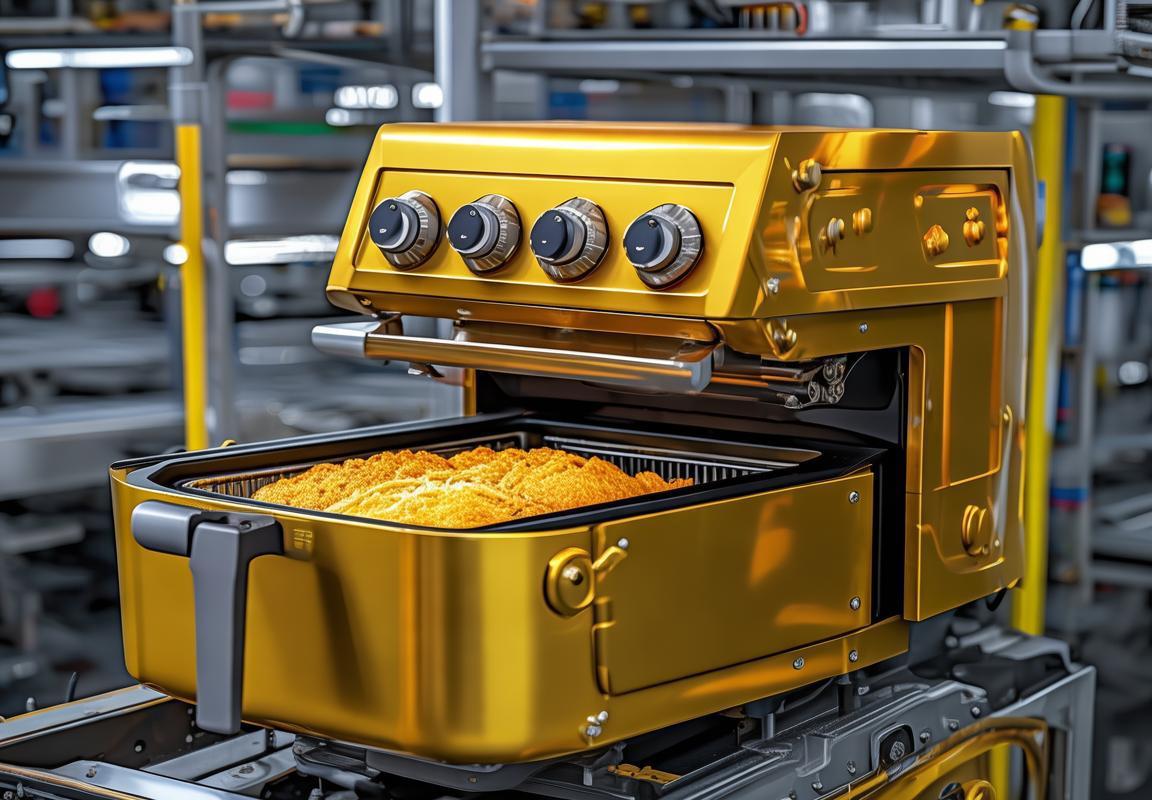
Quality Control and Safety Standards in Restaurant-Grade Air Fryer Factories
In the realm of commercial kitchen equipment, restaurant-grade air fryers have become a staple due to their versatility and efficiency. Ensuring these appliances meet the highest quality and safety standards is paramount. Here’s an inside look at the rigorous processes and stringent checks that take place within the factories that produce these high-end air fryers.
The meticulous process begins with the selection of materials. High-quality stainless steel and durable plastics are chosen for their resistance to heat, corrosion, and wear. These materials are not only robust but also contribute to the longevity of the air fryer.
Once the materials are sourced, they undergo a series of inspections to ensure they meet the factory’s standards. Every component is tested for its specifications, from the precise dimensions of the metal parts to the thickness of the plastic components. This preliminary quality check ensures that only the finest materials are used in the assembly process.
The assembly line is a symphony of precision and care. Workers, often with years of experience, meticulously piece together the air fryer. The heat element is carefully inserted into the housing, and the fan blades are aligned with the precise angle required for optimal air circulation. The electronic components are soldered with precision, and the wiring is checked for any loose connections.
Safety is a non-negotiable aspect of the manufacturing process. Before any electrical component is installed, it is tested for electrical conductivity and resistance to ensure it can withstand the demands of continuous use. The air fryer’s outer casing is tested for heat resistance to prevent any risk of burns or fires.
During the cooking process, the air fryer is subjected to intense pressure to simulate the conditions it will face in a busy kitchen. This pressure test checks for any leaks or weaknesses in the structure. If a unit fails this test, it is immediately set aside for further inspection or repair.
The interior of the air fryer is sanitized regularly to prevent the growth of bacteria and to maintain hygiene. Each unit is cleaned with a high-pressure water jet and disinfected with a specialized solution that targets any potential contaminants.
Once the air fryer is fully assembled and pressure-tested, it moves on to the functionality testing phase. Here, the air fryer is tested for its cooking capabilities, including temperature accuracy and even heat distribution. A team of testers prepares a variety of foods to be cooked in the air fryer, ensuring that it can handle everything from fried chicken to vegetables.
After passing the functionality tests, the air fryer is subjected to endurance testing. This involves running the air fryer continuously for extended periods to ensure it can handle the rigors of daily use in a commercial kitchen. Throughout this testing, the air fryer is monitored for any signs of overheating, abnormal noise, or other potential issues.
Safety certifications are a critical part of the quality control process. Each air fryer is evaluated against international safety standards, such as those set by the Underwriters Laboratories (UL) or the European Committee for Electrotechnical Standardization (CENELEC). Compliance with these standards is verified through rigorous testing and documentation.
Before the air fryer leaves the factory, a final visual inspection is conducted. This ensures that the exterior is free from defects, and all components are properly installed. The user manual is also checked for accuracy and completeness.
The packaging process is equally important. Each air fryer is carefully wrapped and secured in its shipping container to prevent damage during transit. The packaging includes all necessary documentation, including the safety certifications and warranty information.
In conclusion, the journey from raw materials to a finished restaurant-grade air fryer is a testament to the meticulous attention to detail and commitment to safety that defines the manufacturing process. Each step, from material selection to final packaging, is designed to ensure that the end product is not just a commercial kitchen appliance but a reliable and safe tool for professional chefs.
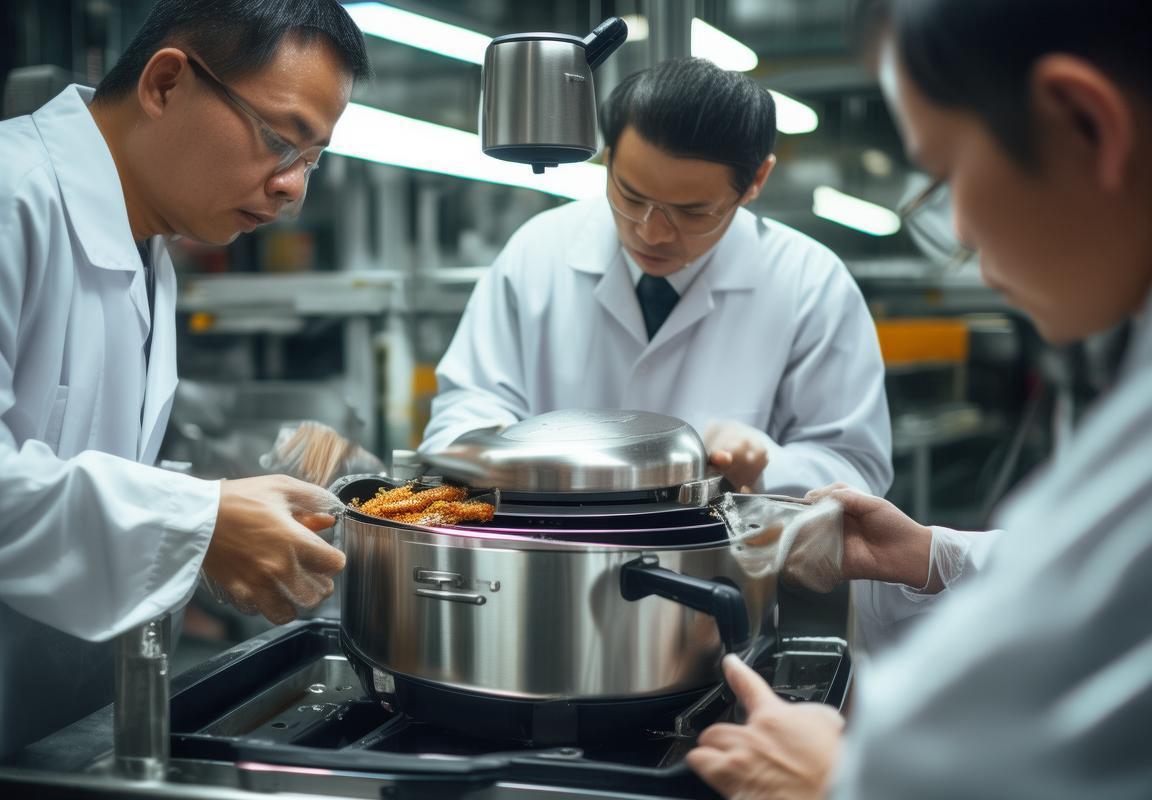
The Impact of Restaurant-Grade Air Fryers on Health and Sustainability
In the culinary world, the introduction of restaurant-grade air fryers has sparked a revolution in both health consciousness and sustainability. These advanced appliances have transformed the way chefs prepare dishes, offering a healthier alternative to traditional frying methods. Here’s a closer look at the impact these fryers have on both health and the environment.
The health benefits of restaurant-grade air fryers are undeniable. By using hot air to circulate around food, these fryers significantly reduce the amount of oil needed for cooking. Traditional deep frying can lead to a high intake of unhealthy fats, such as saturated and trans fats, which are linked to heart disease and other health issues. In contrast, air fryers allow for the preparation of crispy, golden-brown foods with a fraction of the oil, making them a much healthier option.
Moreover, the reduced oil content means that dishes cooked in an air fryer are lower in calories and total fat. This is particularly beneficial for individuals watching their weight or managing specific health conditions like diabetes. The lower fat content also contributes to a more balanced diet, as these fryers can be used to prepare a wide variety of foods, from vegetables and meats to even desserts.
Sustainability is another area where restaurant-grade air fryers shine. The energy-efficient nature of these appliances means they consume less electricity than conventional ovens or deep fryers. This not only reduces the carbon footprint of commercial kitchens but also contributes to overall energy savings. With the growing global concern for climate change and environmental impact, the adoption of energy-efficient appliances like air fryers is a step towards a greener future.
The use of air fryers also helps in reducing food waste. By allowing for a more precise cooking process, these fryers ensure that food is cooked to perfection without overcooking or burning. This leads to less discarded food, which is a significant issue in the food industry. Additionally, the ability to cook smaller portions of food means that ingredients are used more efficiently, further minimizing waste.
From a culinary perspective, restaurant-grade air fryers have expanded the possibilities of what can be cooked in a commercial setting. Chefs are now able to experiment with a wider range of recipes that were previously not feasible due to health or sustainability concerns. This has led to innovative new dishes that are not only delicious but also cater to the growing demand for healthier eating options.
The impact of these fryers on the taste and texture of food is also notable. Despite the lower oil content, dishes cooked in an air fryer retain a satisfying crunch and flavor that is often associated with deep-fried foods. This has been a game-changer for many restaurants and foodservice operations, as they can offer their customers a healthier alternative without compromising on taste.
On the production side, the sustainability of restaurant-grade air fryers is reflected in their manufacturing process. Many manufacturers are now using recycled materials and sustainable practices to produce these appliances. This not only reduces the environmental impact but also aligns with the values of eco-conscious consumers.
In terms of safety, restaurant-grade air fryers are designed with the health and safety of kitchen staff in mind. They often come with features like automatic shut-off, overheat protection, and non-stick surfaces to prevent burns and reduce the risk of kitchen accidents. This emphasis on safety is crucial in a professional kitchen environment where the risk of injury is a constant concern.
As the popularity of restaurant-grade air fryers continues to grow, their impact on the health and sustainability of the culinary industry is becoming increasingly significant. From reducing the amount of oil used in cooking to promoting energy efficiency and minimizing food waste, these fryers are not just a trend; they are a crucial tool in the fight against obesity, heart disease, and climate change. The future of commercial kitchens looks brighter, and it’s largely thanks to the innovation and efficiency of restaurant-grade air fryers.
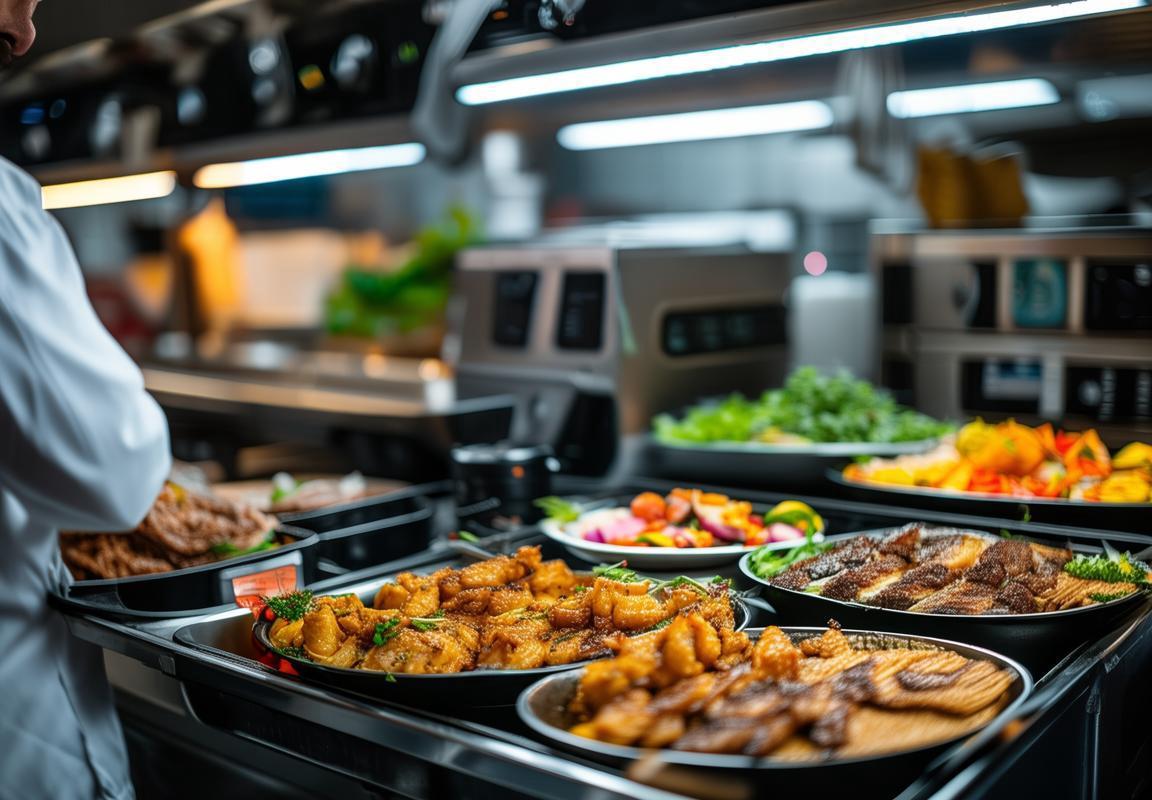
Case Studies: Successful Restaurant-Grade Air Fryer Brands
In the world of commercial kitchen equipment, a few brands have stood out for their exceptional restaurant-grade air fryers. Let’s delve into the success stories of these brands, examining what sets them apart and how they’ve made a mark in the industry.
One such brand is Chef’s Star, known for its durable and efficient air fryers. Their products have become a staple in high-end restaurants and commercial kitchens. Chef’s Star’s air fryers are designed with a focus on even heat distribution, ensuring that each dish is cooked to perfection. The brand’s commitment to innovation is evident in their use of advanced technology, such as the ability to adjust cooking temperatures and times, making them a favorite among chefs who demand precision.
Another standout brand is Gourmia, which has gained a reputation for its user-friendly design and affordability. Gourmia’s restaurant-grade air fryers are not just for professional kitchens; they’ve also found their way into home kitchens of culinary enthusiasts. The brand’s success lies in its ability to balance commercial-grade performance with consumer-friendly features, like easy-to-read displays and intuitive controls.
Cuisinart, a household name in kitchen appliances, has also made waves with its restaurant-grade air fryers. The brand’s air fryers are well-known for their powerful performance and sleek design. Cuisinart has leveraged its years of experience in the appliance industry to create air fryers that are both functional and attractive, appealing to chefs and home cooks alike.
The Hamilton Beach brand has also carved out a niche for itself in the restaurant-grade air fryer market. Their air fryers are celebrated for their versatility, offering a range of cooking options beyond the traditional air frying. From baking to roasting, Hamilton Beach’s air fryers provide chefs with a multi-functional appliance that can handle a variety of tasks, making them a valuable addition to any kitchen.
One brand that has truly disrupted the market is Philips, with their iconic Avance collection. Philips’ air fryers are recognized for their advanced features, such as a unique Rapid Air Technology that ensures fast and even cooking. The brand’s commitment to health and sustainability is evident in their use of eco-friendly materials and energy-efficient designs. Philips has become a go-to brand for restaurants looking to offer healthier options to their customers without compromising on taste or quality.
In the world of commercial air fryers, the brand Big Boss has made a significant impact. Known for their robust construction and powerful performance, Big Boss air fryers are a favorite among busy chefs. The brand’s air fryers are designed to handle the demands of a high-volume kitchen, with features like a large capacity and a durable exterior that can withstand the rigors of daily use.
The success of these brands can be attributed to several factors. One is their dedication to quality and innovation. They invest in research and development to create air fryers that not only meet but exceed industry standards. Another factor is their understanding of the needs of both professional chefs and home cooks. They design their products to be versatile, user-friendly, and efficient, ensuring that they can be used in a variety of settings.
Customer service also plays a crucial role in the success of these brands. They offer excellent support and warranty options, which helps build trust and loyalty among their customers. Additionally, these brands often engage in partnerships with restaurants and culinary schools, providing them with the tools they need to succeed in their respective markets.
In conclusion, the success of restaurant-grade air fryer brands like Chef’s Star, Gourmia, Cuisinart, Hamilton Beach, Philips, and Big Boss is a testament to their commitment to quality, innovation, and customer satisfaction. By understanding the needs of their customers and continuously improving their products, these brands have become household names in the culinary industry. Their air fryers are not just cooking appliances; they are tools that help chefs create delicious, healthy dishes with ease and efficiency.
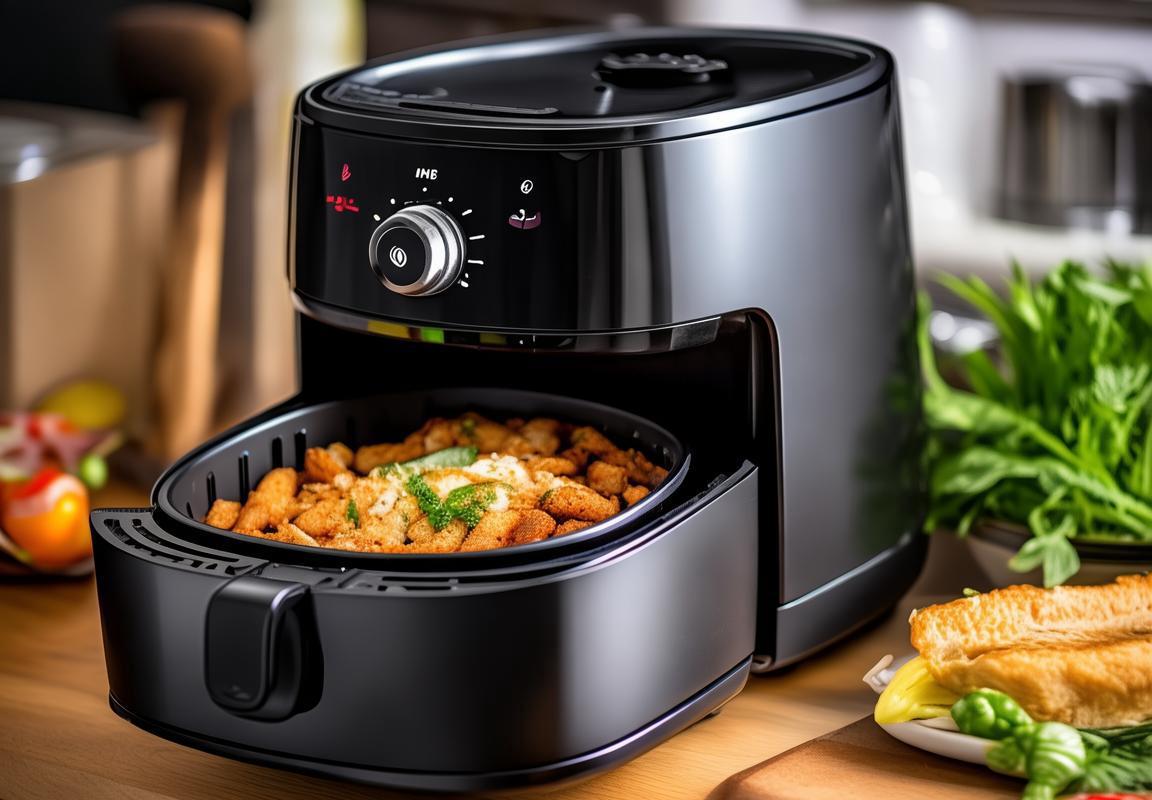
The Future of Restaurant-Grade Air Fryer Technology
In recent years, the culinary landscape has been revolutionized by the advent of restaurant-grade air fryers. These appliances, designed for professional use, have not only found their way into commercial kitchens but are also making waves in the home cooking arena. Let’s delve into the impact these fryers have on health and sustainability, examining how they’re changing the way we think about cooking and food preparation.
The Health AspectOne of the most significant impacts of restaurant-grade air fryers is their health benefits. Traditional deep-fat frying is notorious for its high oil content, which can lead to increased calories and saturated fats in foods. In contrast, air fryers use a fraction of the oil, often as little as a tablespoon, to achieve a crispy texture similar to deep-fried foods. This reduction in oil usage means lower calorie and fat counts, making air-fried dishes a healthier option for those conscious about their dietary intake.
Furthermore, the air fryer’s ability to cook with hot air and little to no oil can help retain more nutrients in the food compared to deep-frying. For instance, when cooking vegetables, the vitamin content can be preserved better, offering a more nutritious option for consumers. This aspect is particularly appealing to health-conscious diners and those following low-carb or keto diets.
Sustainability EffortsSustainability is another area where restaurant-grade air fryers are making a difference. The reduced need for oil not only cuts down on the amount of oil that needs to be sourced, processed, and disposed of but also reduces the environmental footprint associated with oil production. Additionally, air fryers typically use less electricity than traditional deep-frying methods, contributing to energy savings.
Moreover, the fact that air fryers can cook a variety of foods, from snacks to main dishes, means that they can replace multiple cooking appliances in a commercial kitchen. This consolidation can lead to reduced waste in terms of kitchen space and energy consumption. The long lifespan of these fryers, coupled with their ease of maintenance, further supports sustainability efforts by reducing the need for frequent replacements.
Innovation in Food PreparationThe rise of restaurant-grade air fryers has spurred innovation in the food industry. Chefs and kitchen staff are now experimenting with different recipes and cooking techniques that were previously impossible or impractical with deep-fat fryers. The even heat distribution of air fryers allows for more precise cooking, which means that food can be cooked to a specific temperature without the risk of burning or uneven cooking.
This precision has opened up new possibilities for creating dishes with a crispy texture on the outside and a tender interior. It has also allowed for the development of healthier versions of traditional fried foods, which are becoming increasingly popular among health-conscious consumers.
Consumer Demand and Market GrowthConsumer demand for healthier, more sustainable cooking methods has driven the growth of the restaurant-grade air fryer market. As more people seek out restaurants and cafes that offer health-forward options, these establishments are incorporating air fryers into their kitchens to cater to this demand. This trend has been further accelerated by the rise of fast-casual dining, where quick, convenient, and nutritious meals are the norm.
The popularity of air fryers in the home kitchen has also soared. Many consumers are embracing the convenience and health benefits of these appliances, leading to a significant increase in sales. As a result, manufacturers are investing in research and development to create even more advanced and efficient air fryers that cater to both commercial and consumer markets.
Case Studies: Successful Restaurant-Grade Air Fryer BrandsSeveral brands have made a name for themselves in the restaurant-grade air fryer market. Here are a few notable examples:
-
Avanti Professional has become synonymous with quality in the air fryer industry, offering a range of commercial-grade fryers that are durable, easy to use, and energy-efficient.
-
Presto’s AirFryer is a household name, known for its compact size and ability to cook a variety of foods with minimal oil. Their products have been a hit with both professional chefs and home cooks.
-
Philips’ Avance Collection air fryers are praised for their sleek design and advanced features, such as smart technology that allows users to program their desired cooking times and temperatures.
The Future of Restaurant-Grade Air Fryer TechnologyLooking ahead, the future of restaurant-grade air fryer technology is bright. Innovations such as programmable settings, intelligent temperature control, and even voice-activated operation are on the horizon. These advancements will make air fryers even more versatile and user-friendly.
Furthermore, we can expect to see continued improvements in energy efficiency and material sustainability. As the world becomes more environmentally conscious, manufacturers will likely focus on producing air fryers that are not only high-performing but also eco-friendly.
Another area of potential growth is the integration of air fryers into smart kitchen ecosystems. With the rise of smart appliances, air fryers could be controlled remotely through smartphones or voice assistants, offering even greater convenience and customization.
In conclusion, restaurant-grade air fryers have had a profound impact on both health and sustainability. As technology continues to evolve, these appliances are set to become an even more integral part of the culinary landscape, offering chefs and consumers alike a healthier, more sustainable way to enjoy their favorite fried foods.
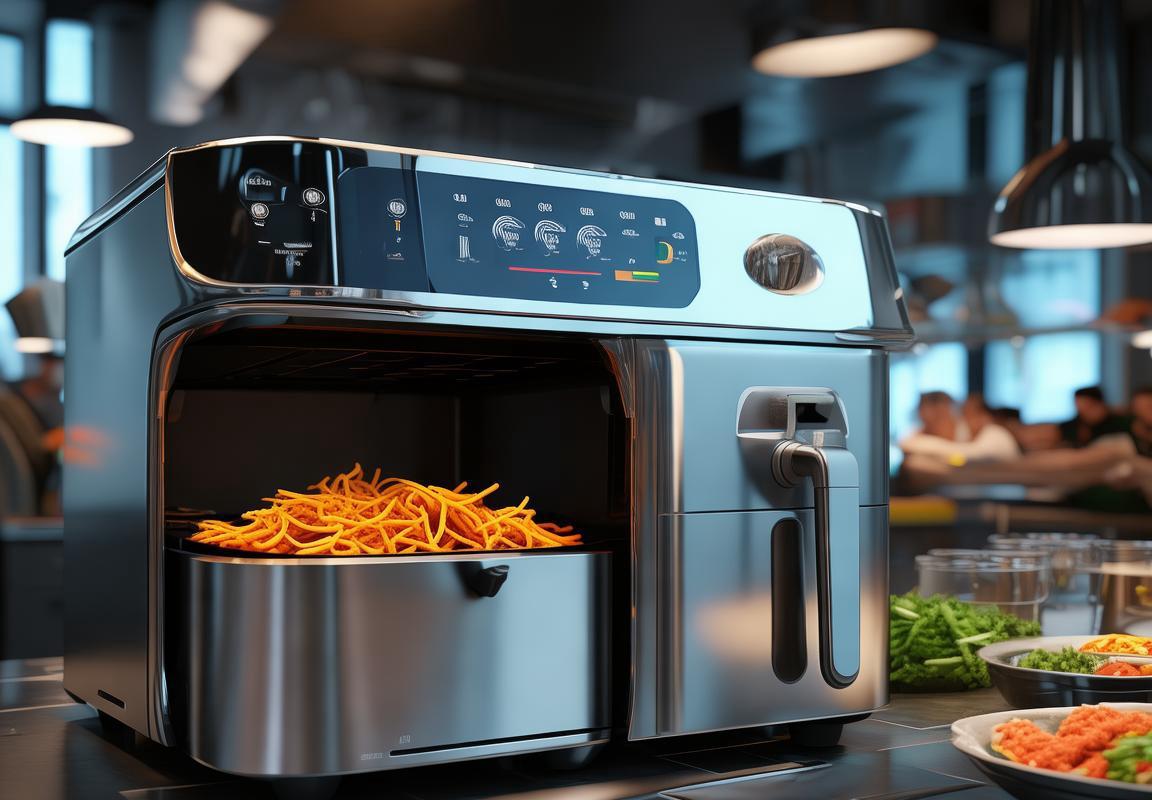
Conclusion: Why Restaurant-Grade Air Fryer Factories Are a Game-Changer
In the evolving landscape of commercial cooking equipment, restaurant-grade air fryer factories have revolutionized the way food is prepared, offering a blend of health benefits, efficiency, and sustainability. The transformation in the culinary industry driven by these specialized fryers is profound, and here’s a look at why restaurant-grade air fryer factories are making a significant impact.
These factories produce fryers that are not just larger and more robust than your average home model, but they also embody a range of cutting-edge features that cater to the demanding needs of professional kitchens. The impact of these features on both the health of consumers and the environmental footprint of restaurants is considerable.
One key feature is the precise temperature control, which allows chefs to achieve consistent cooking results time and again. The ability to maintain a specific heat level is crucial for preparing food to perfection, whether it’s crispy fries or golden-brown chicken. The advanced temperature control also means that chefs can easily adjust settings to accommodate various recipes, ensuring that the flavors and textures are as intended.
Another important aspect is the rapid heating capability, which means that food can be cooked at a faster rate without compromising on quality. This feature is a game-changer for busy restaurants looking to reduce wait times while maintaining high standards of service. The efficiency gained from these air fryers can lead to cost savings on energy and labor.
Safety is paramount in restaurant operations, and restaurant-grade air fryers are designed with multiple safety features. They often include non-stick coatings that reduce the risk of burns and simplify cleaning, as well as safety locks that prevent the fryer from operating if the cover is not securely in place. These safety measures are essential in maintaining a safe kitchen environment for both staff and patrons.
The health implications of restaurant-grade air fryers cannot be overstated. By using less oil than traditional deep fryers, these appliances help reduce the fat content of foods, making them a healthier option for consumers. This shift towards healthier cooking methods has been welcomed by both diners and health-conscious restaurant owners. The potential for offering a variety of low-fat, high-quality dishes has opened new opportunities for innovation on menus.
In terms of sustainability, the energy efficiency of air fryers is a significant factor. They use less energy compared to traditional deep fryers, which means a lower carbon footprint and reduced operating costs for restaurants. As environmental concerns grow, the demand for sustainable cooking solutions has increased, and restaurant-grade air fryer factories are responding to this market need.
There are several case studies of successful restaurant-grade air fryer brands that have made waves in the industry. One such brand is Prestige, known for their commercial-grade fryers that are durable and user-friendly. Prestige has built a reputation for high-quality products that last, which is evident in their widespread use across restaurants and catering businesses.
Another standout brand is TurboChef, which has leveraged technology to create fryers that offer speed and efficiency without sacrificing quality. Their fryers are not only energy-efficient but also capable of cooking a variety of foods, from vegetables to meat, with a minimal amount of oil. This versatility has made TurboChef a popular choice among chefs seeking to expand their menu offerings.
The future of restaurant-grade air fryer technology is poised to be even more impressive. Advances in technology are leading to fryers that are not only more efficient and safe but also more adaptable to the needs of various cuisines and cooking styles. Some factories are experimenting with smart technology that can adjust cooking parameters based on the type of food being prepared, further enhancing efficiency and reducing waste.
In conclusion, restaurant-grade air fryer factories are a game-changer because they offer a comprehensive solution to the needs of professional kitchens. Their focus on health, sustainability, and efficiency has not only transformed the way food is cooked but also opened up new possibilities for the culinary industry. As these factories continue to innovate, the future of cooking in restaurants is looking brighter and healthier than ever before.